Design Out Waste
What is the right thing to do with your old iron, radio, and kettle? They can’t go in your recyclables and taking them to the dump is a hassle. Perfectly sized for the household bin, this is where 90% of them end up. Valuable and finite resources get lost to landfill.
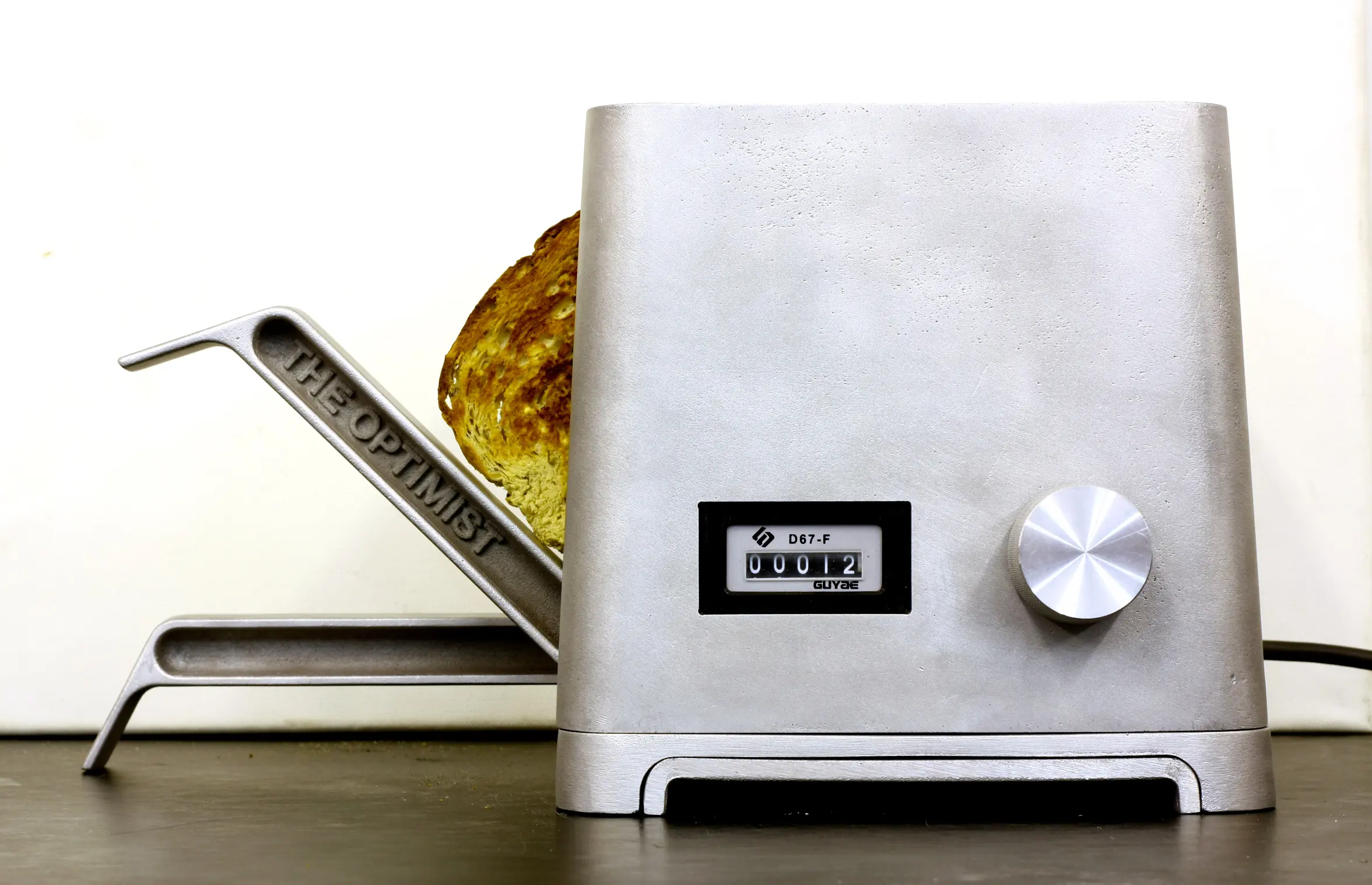
This project looked at the end-of-life for electrical products and designed alternative ways to make the most of the material that they embody. There is no one-size-fits-all solution to this problem. To demonstrate this, we designed three toasters: The Realist, The Pragmatist and The Optimist, each demonstrating a different strategy to create circular material flows.
The early project research was inspired by the ideas of industrial ecology , Cradle to Cradle and decoupled growth . We identified electrical products as our target and started trying to design out waste. Reality hit when we visited an electrical product recycling centre. Products were dumped by lorries, then thrown on a conveyor belt and dropped through an industrial shredder. Whole products went in one end and flakes about 1cm square came out of the other.

While steel and aluminium could be separated well, plastics were very mixed and resulted in a low-grade output. The most valuable material stream was the circuit boards, which were separated and passed on to a smelter to capture their precious metal. Unfortunately, only a small percentage of their material content could be captured in this process, with the bulk going to waste. What we saw was very far from the Cradle to Cradle vision of recycling a product into something of equivalent value.
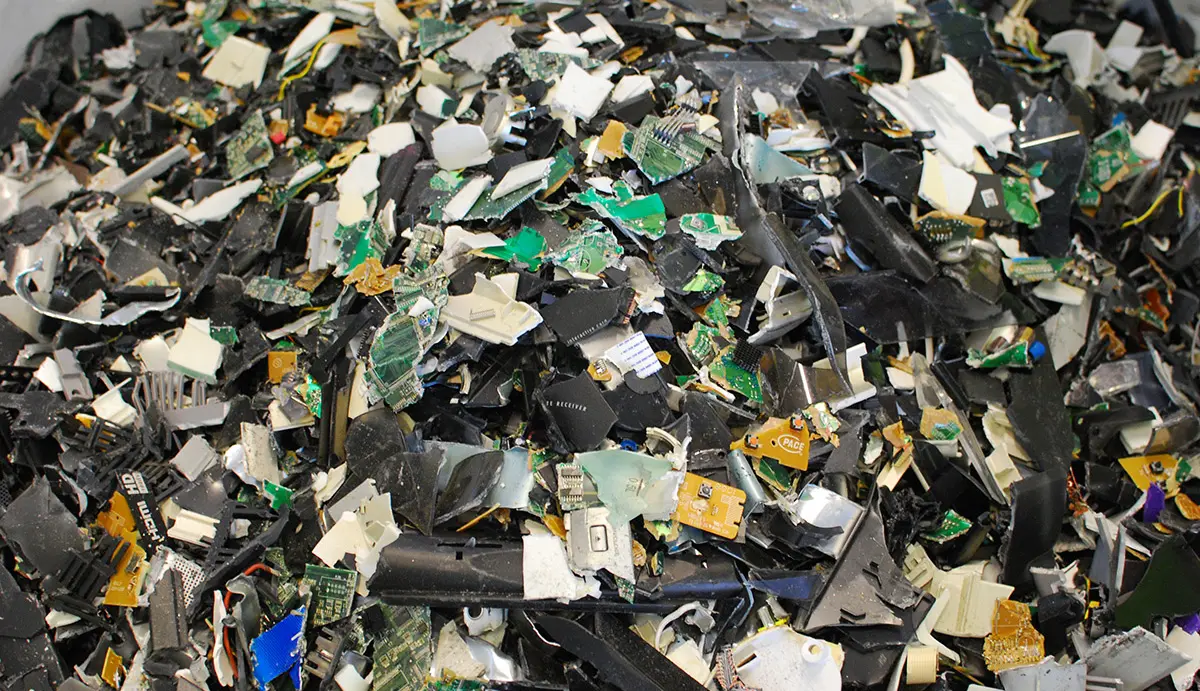
This was a bit of a shock and revealed a hard truth - that there is no point designing a product for disassembly if it’s going to go through a shredder. It also highlighted what was at the heart of the problem: the complete separation between manufacturer and recycler.
Even with the best design for end-of-life, there is no financial motivation for the manufacturer to change when it is only the recycler that will profit from this. The manufacturer’s primary motivation is to design for quick and cheap assembly, with little need to think about an end-of-life strategy.
At this point, we thought there wasn’t much we could do to change the situation. However, a meeting with Orangebox changed our perspective. Orangebox manufacture office chairs, and a few years previously had started offering to remove any old chairs before they delivered their new ones. This was to offer a better service to their customers, but had a big knock-on effect. They started disassembling the chairs to try and recover and sell the materials. They quickly realised it was taking an employee 45 minutes to take the chair apart, and their labour cost was wiping out the value of the materials they were recovering. This changed their design priorities for their next chair; the Ara chair could be pulled apart by hand, materials were standardised and the next life of the product had already been planned.
We were impressed. These were simple design changes that made the material easy to recover and maintained quality, but we realised the most crucial part wasn’t the design details but getting the product back to the manufacturer. These design changes would have made no difference in the collective model of waste recycling we had seen at the recycling centre. But because Orangebox took their own products back, they had the motivation to make sure they could recover the material value as quickly and cleanly as possible.
It was at this point that we realised the design solution was in connecting the manufacturer with their waste, to create the right motivations to redesign their product. Ultimately, this meant designing the system before the product.
We had seen from the recycling centres that anything smaller than the size of a household bin gets very low recycling rates (~12%). When a small product breaks, people feel reluctant to drive to the local authority recycling centre, and instead it ends up in their bin. It was because of this that we chose to design toasters - simple products that people use everyday, yet we either landfill them or recycle them poorly. Each of our toasters embodies a different strategy to designing circularity from the outset.
The Optimist
A big part of the problem we were trying to solve was simply to do with the obsolescence of products. So, The Optimist was designed to last for generations: a sturdy piece of cast aluminium, so simple that there was nothing to break.
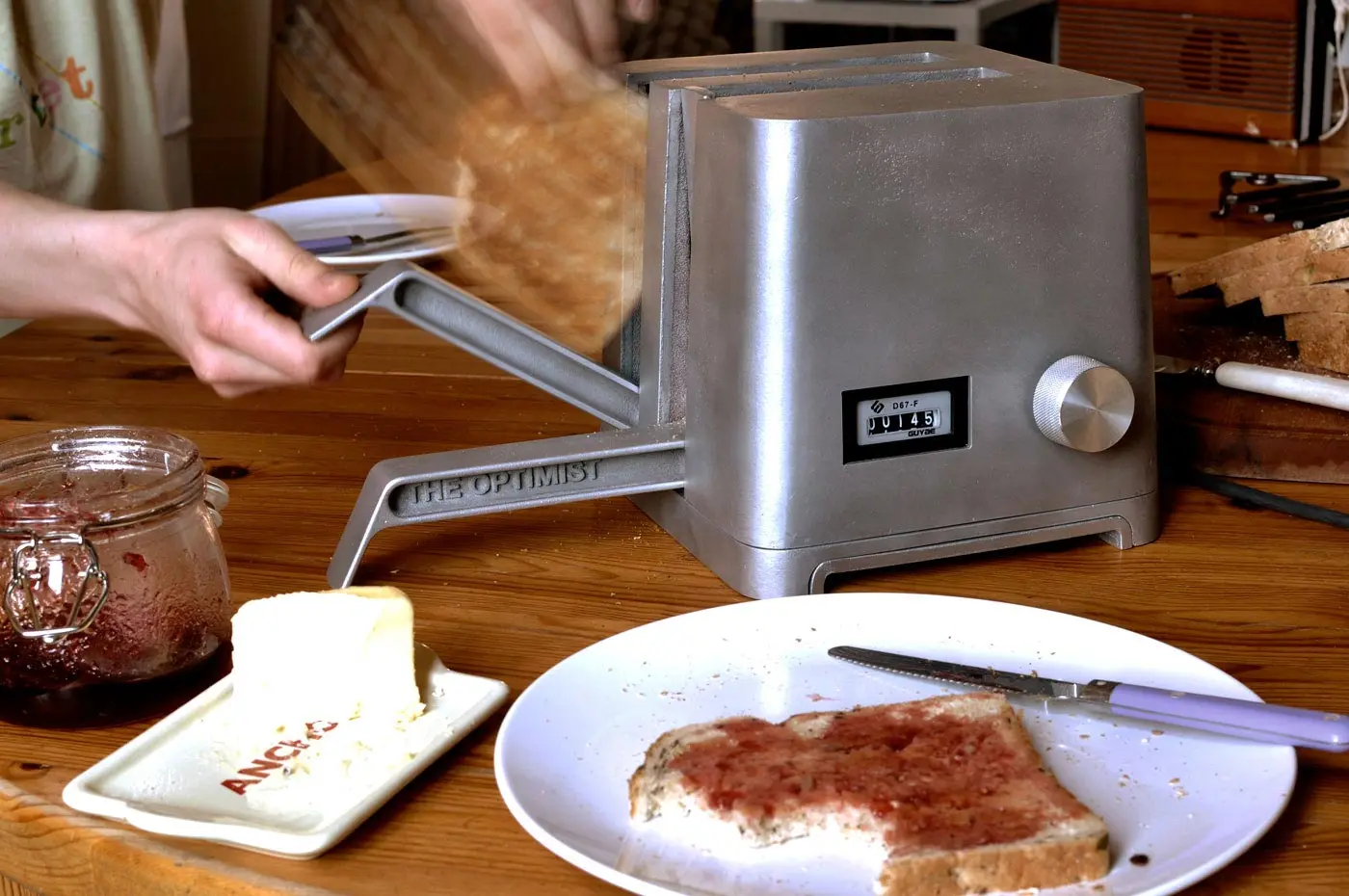
Rather than a complex popping mechanism, the arms rotate out to the side, so there are very few moving parts. Four bolts on the base provide access to the inside where the elements simply unclip to be replaced.
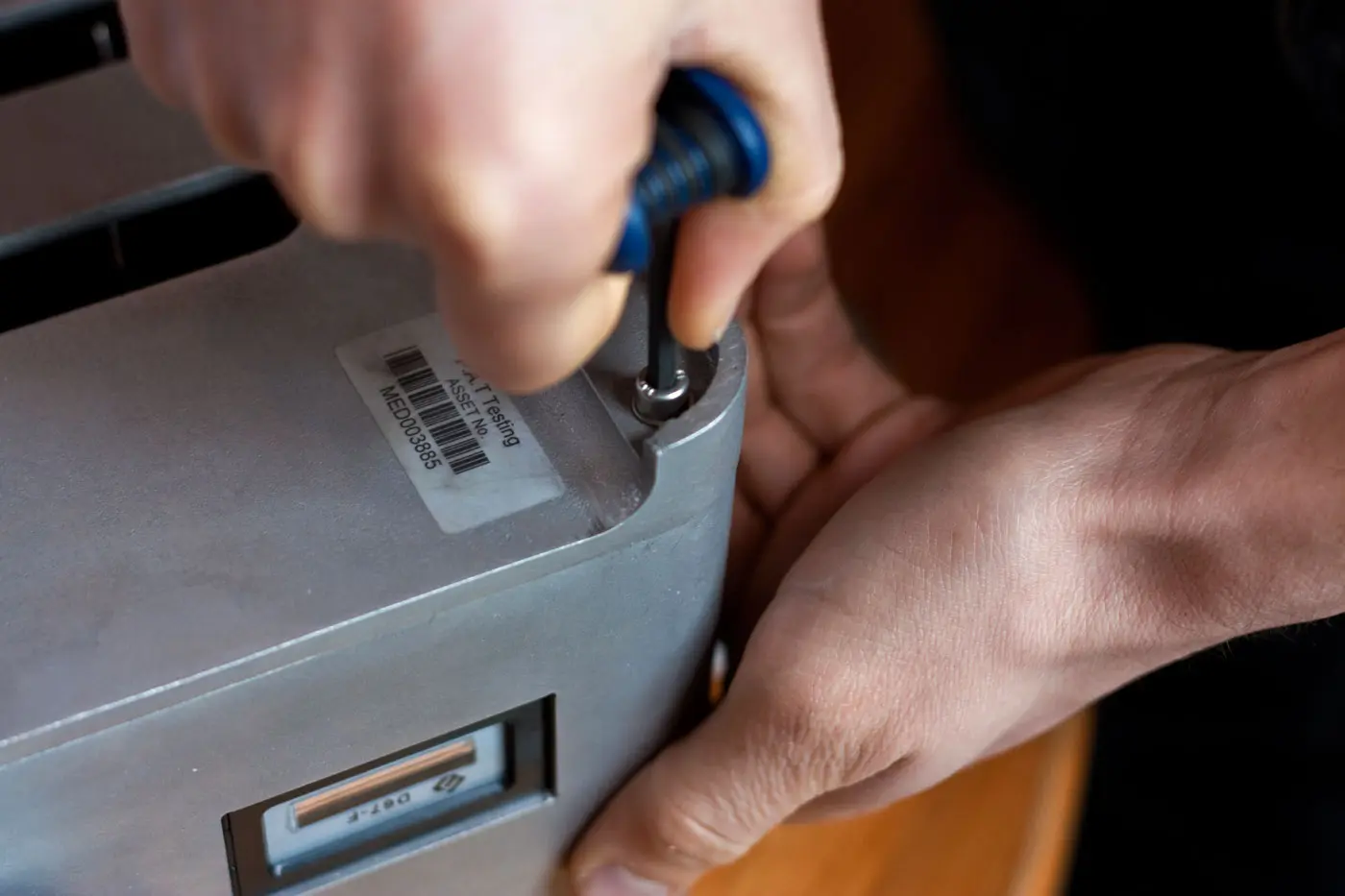
We had seen that aluminium moves through our current recycling system very well. It recycles with no loss of its material properties and has a high inherent material value. This guarantees that it will always be desirable to recyclers, and future-proofs its eventual recycling. We tried to make every part of The Optimist out of aluminium, starting off with 100% recycled content that can be infinitely recycled into other products at the end of its life.
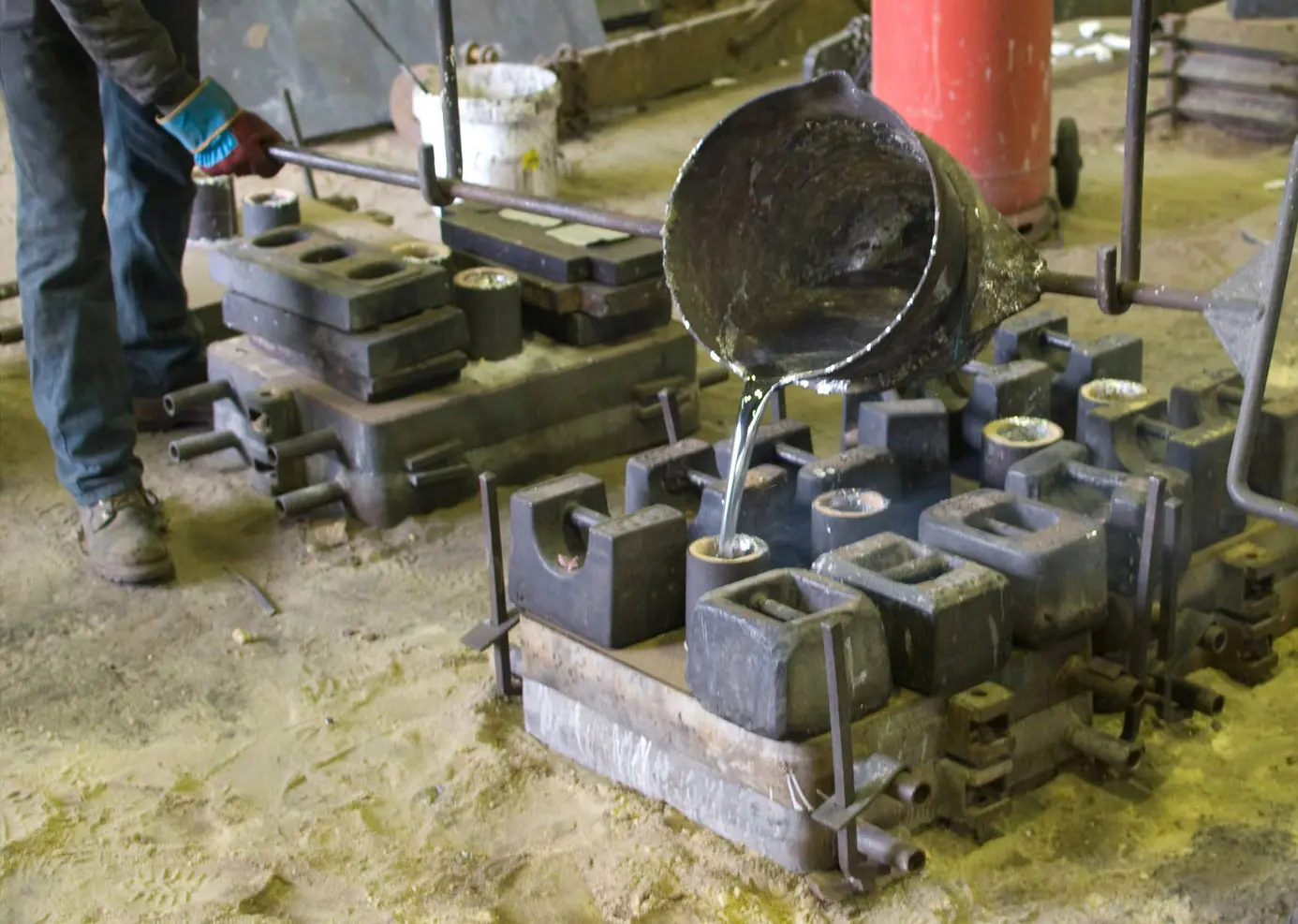
As it was going to last a long time, we designed details that would celebrate its age. The Optimist has its date of birth cast into the backs of the levers and a rough surface texture, allowing it to grow old gracefully. It also has a toast counter on the front face that clicks round each time you make a slice of toast. This means that when you hand the toaster down through the generations, your children will know you’ve enjoyed 55,613 rounds of toast!
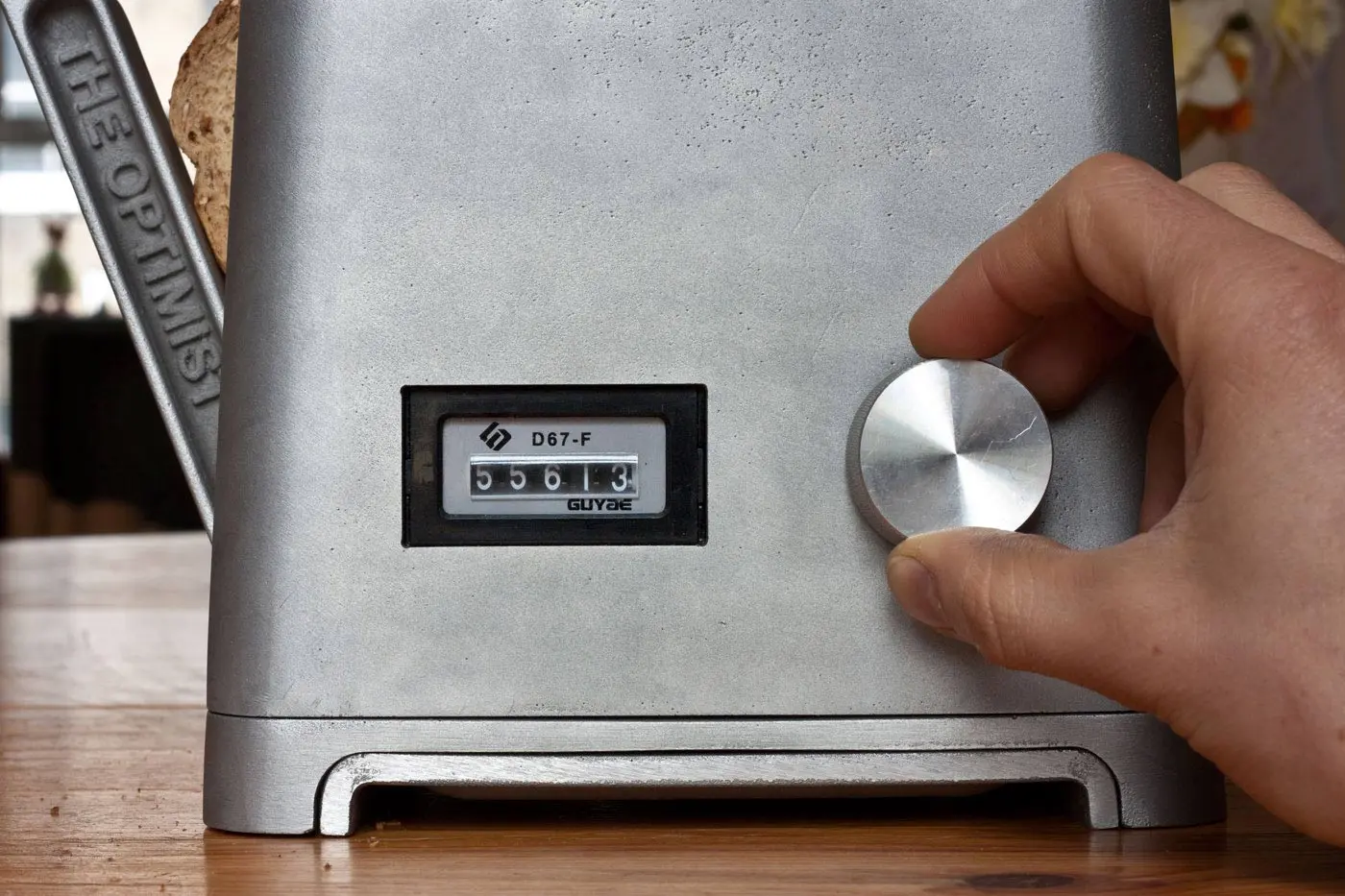
The Pragmatist
The Pragmatist was designed to directly connect the manufacturer with the consumer, to create ongoing material flows. We knew the only way to achieve high quality material recycling was for a manufacturer to take back their own products, but there was no way to easily achieve this with existing products. Our solution was to build a modular toaster, where individual toasting slots join together to form any size of toaster you need.
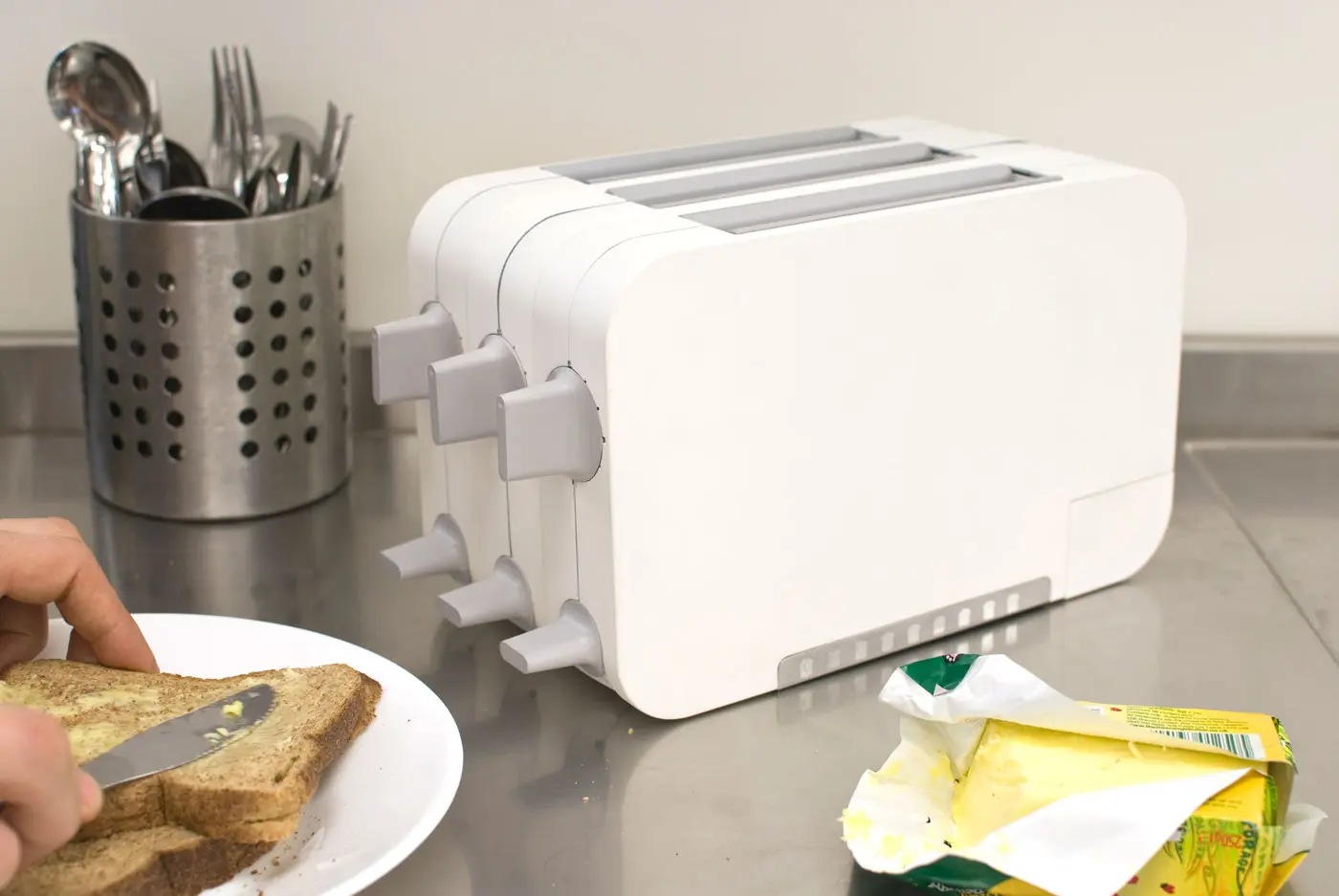
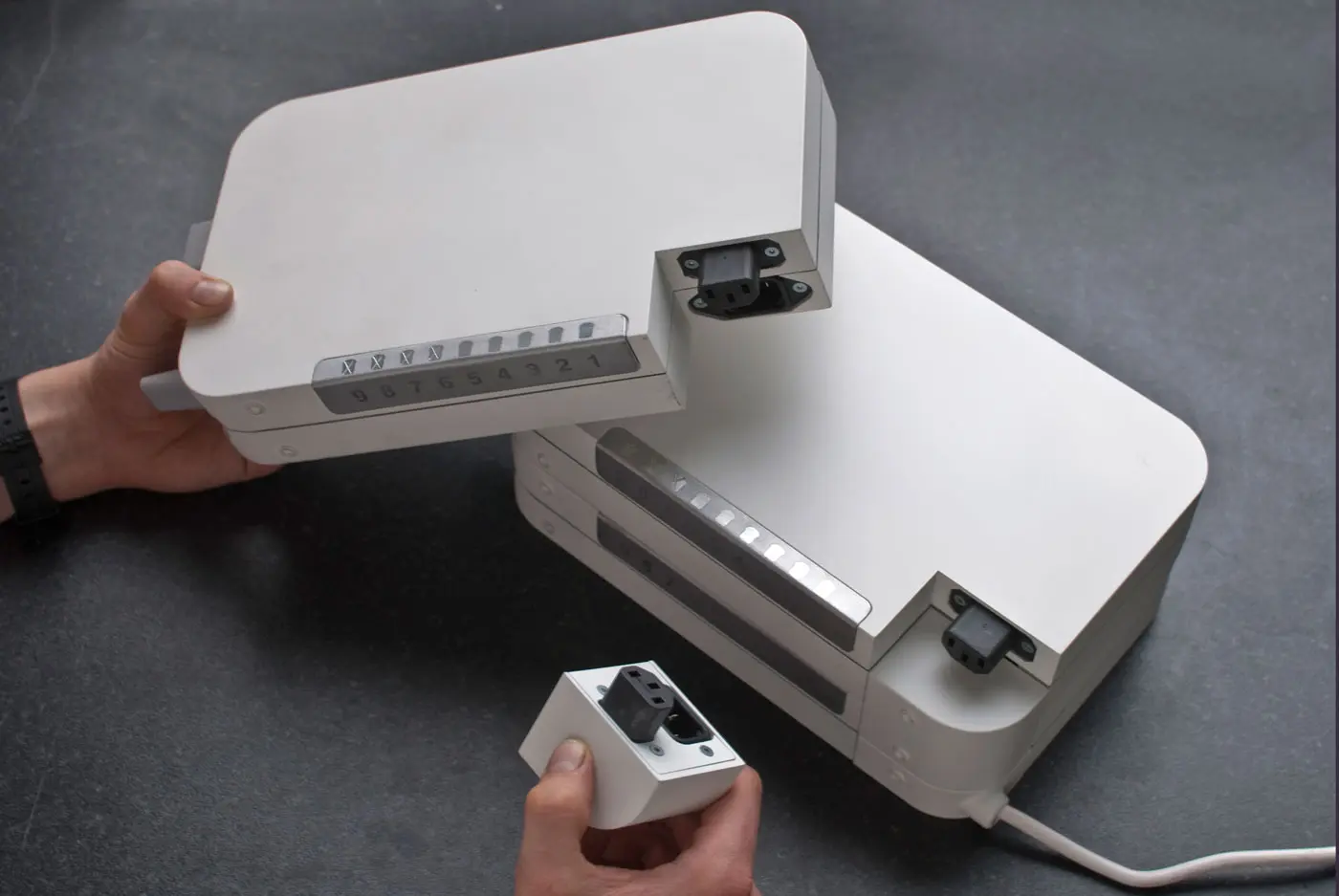
This means that when an element eventually fails, the broken slot can be unclipped from the toaster, leaving the remaining slots still working. The consumer still has a working toaster while the broken slot is returned to the manufacturer and a replacement sent out. This modular approach also allowed us to make the individual slots thin enough to fit through a letterbox, making the return process as easy as possible for the consumer. These toasters should never end up in the bin.

With the manufacturer having a direct link to their own products, the design motivations shift - you now need a fast and economical way to disassemble and refurbish your product so it can be ready for use again. This naturally leads to a very clear set of design requirements: simple construction, reusable parts and standardised materials.
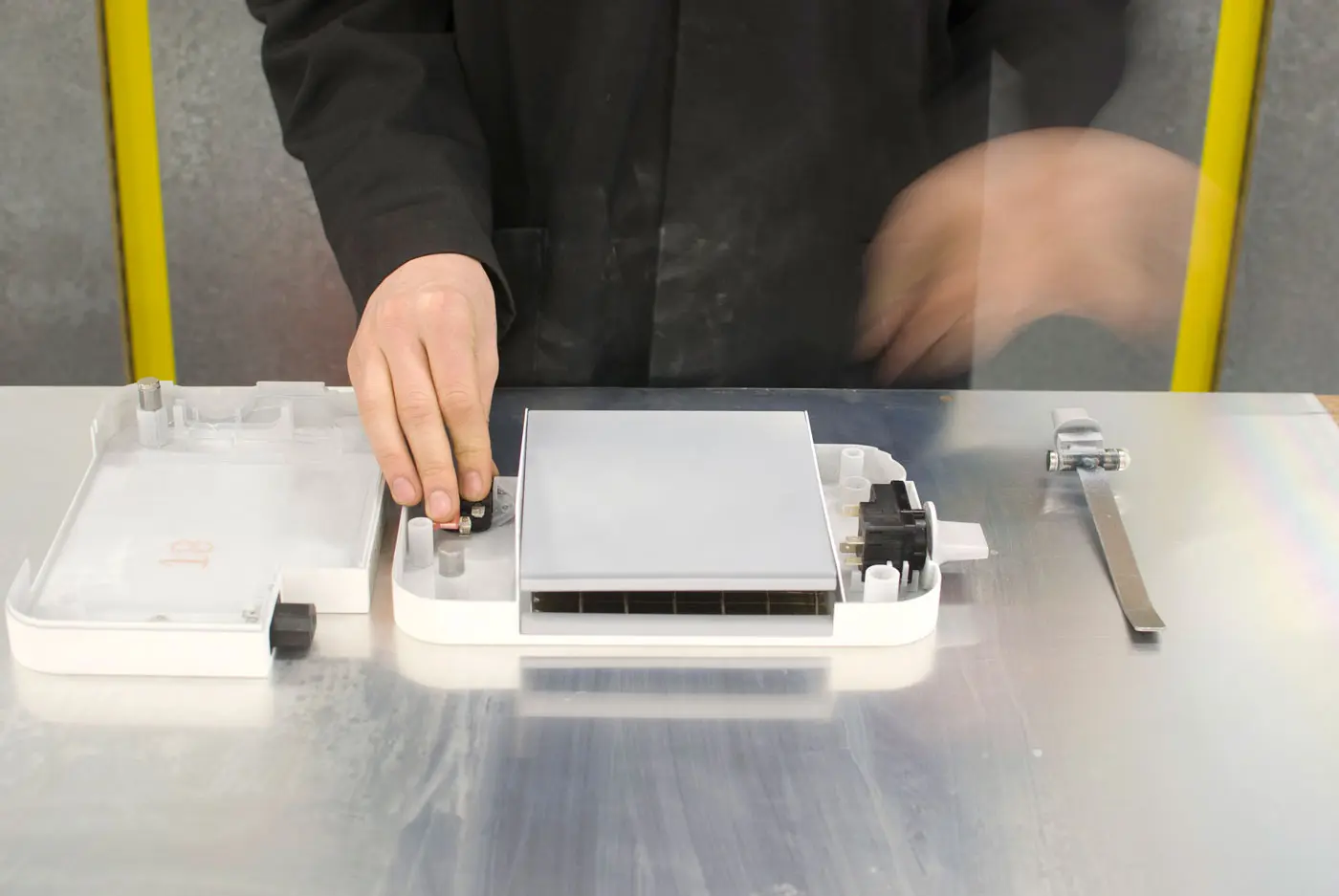
We had seen in our research trips that mixing polymers were a particular problem. Even the same family of polymers would quickly degrade if you mixed different suppliers’ products. This meant that a recycled polymer would typically get one or maybe two additional lives, but with far lower performance properties. However, if you are recycling a polymer with more of exactly the same material, you can get eight or nine lives out of the material with equivalent performance properties. This is something that is only really possible when you recover your own products. To share this insight with the consumer, we gave each slot of The Pragmatist nine lives. A plate on the bottom shows consumers how many times the toaster can cycle before it finally has to use new materials.

The Realist
With The Realist we looked for the closed-loop solution at the cheapest end of the market, something that would work for the £4.99 toaster you buy from a supermarket. We had visited dry recycling processing facilities and seen very impressive visual identification and separation of products. We knew that in the future this could be a route for small electrical products, but this would require a method of separation that didn’t degrade and mix their materials.

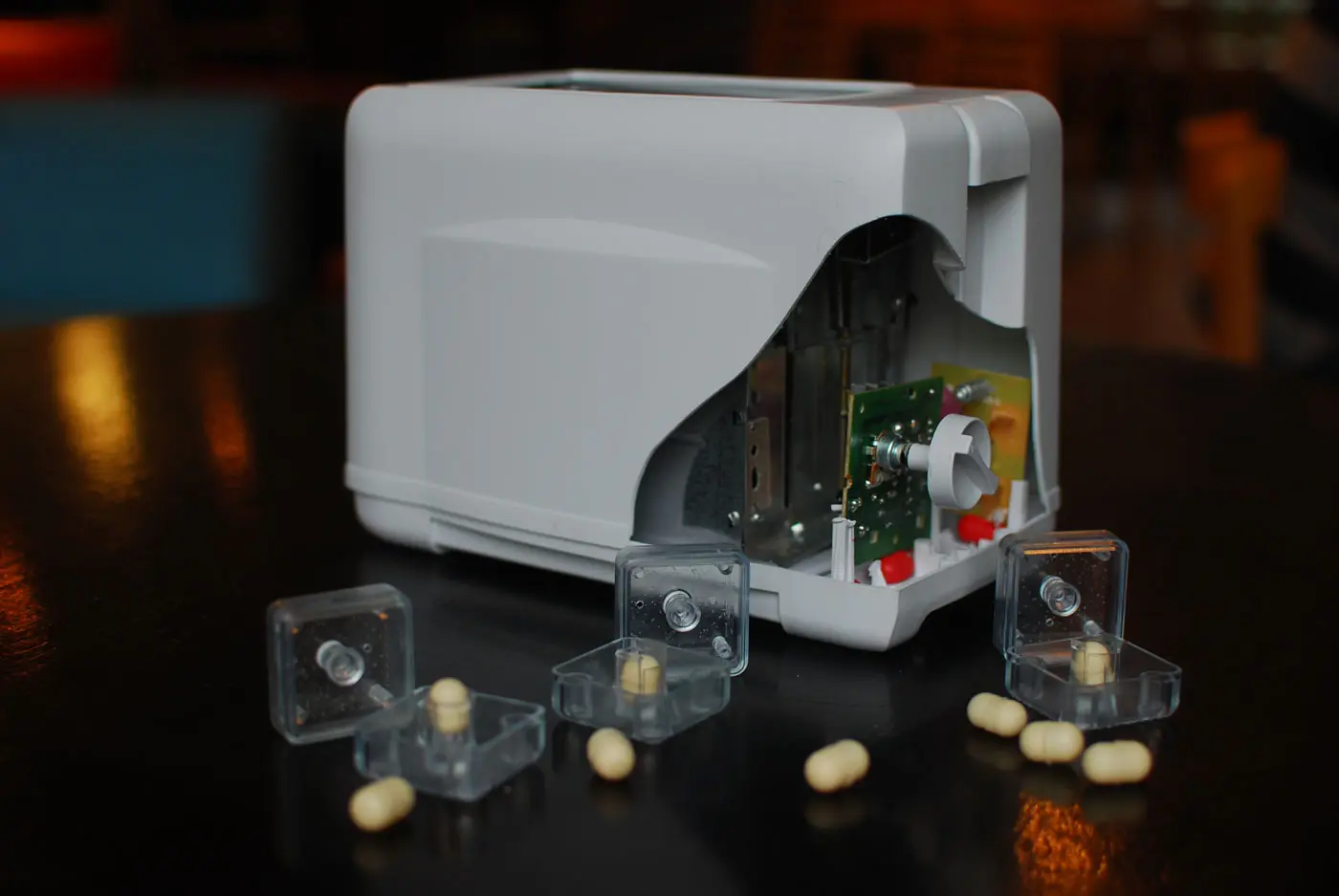
To solve this, we looked for the cheapest method of disassembly possible. Knowing that any labour time could eliminate the value of the materials, we developed a small pellet that sits next to a snap fit joint. The whole product can be placed in a vacuum chamber (a cheap piece of capital equipment) and the pellets expand to undo the snap fits, disassembling the product. This allows non-destructive separation of the materials, enabling visual identification and high-quality material reprocessing.
This was an eye-opening project for us. It showed us that solutions to closed-loop products start by connecting manufacturers and their products in the right way. If you can achieve this, you can create the right motivations to fuel innovation, design and competition in circular products.
Since designing the toasters, we have joined the circular economy 100 and developed a range of circular economy projects.